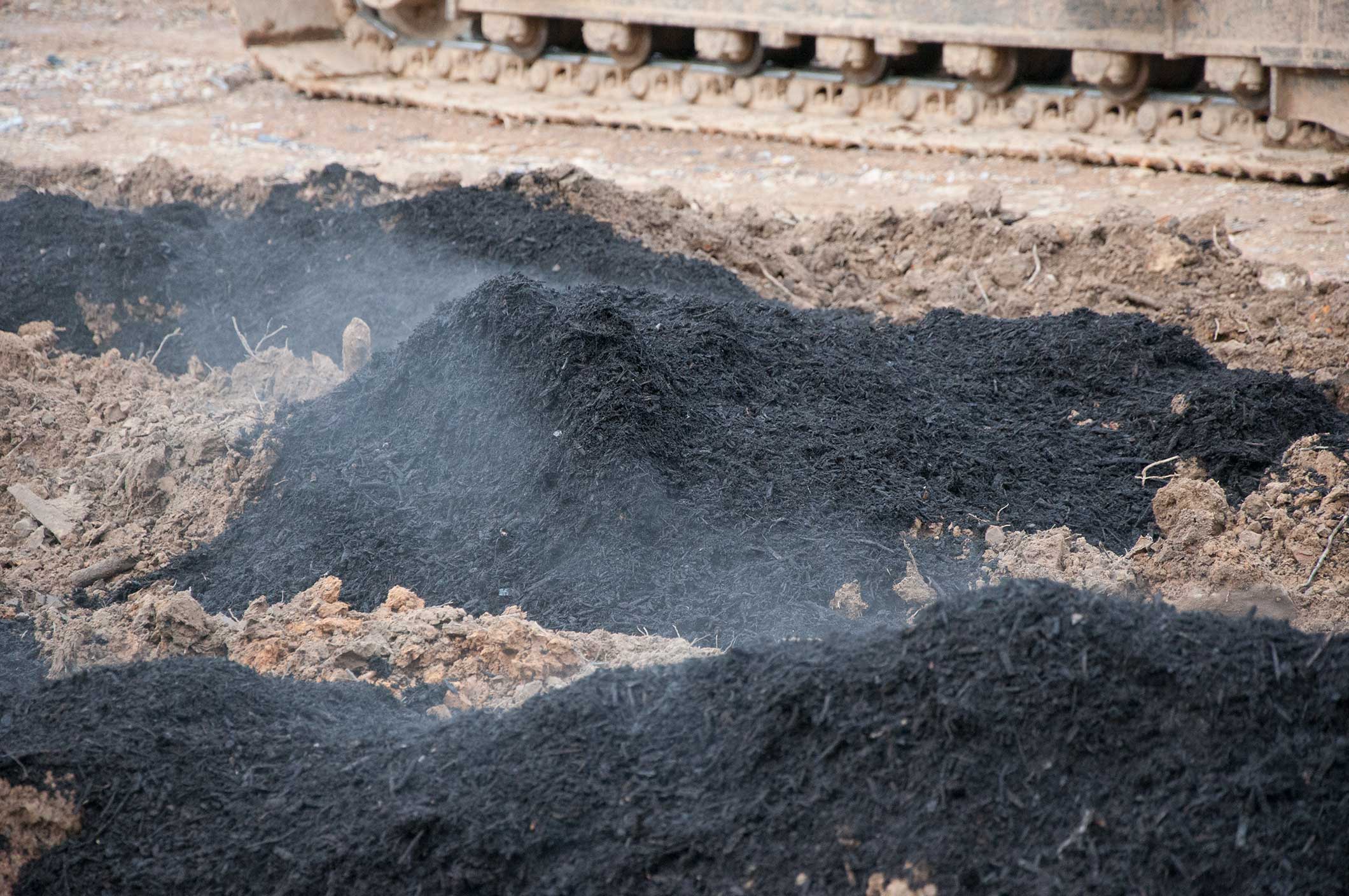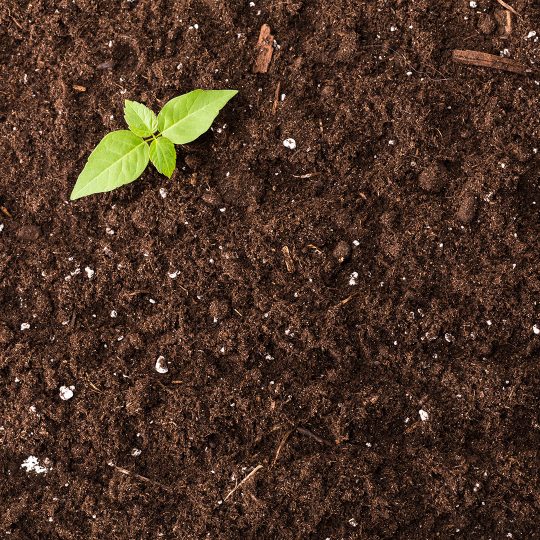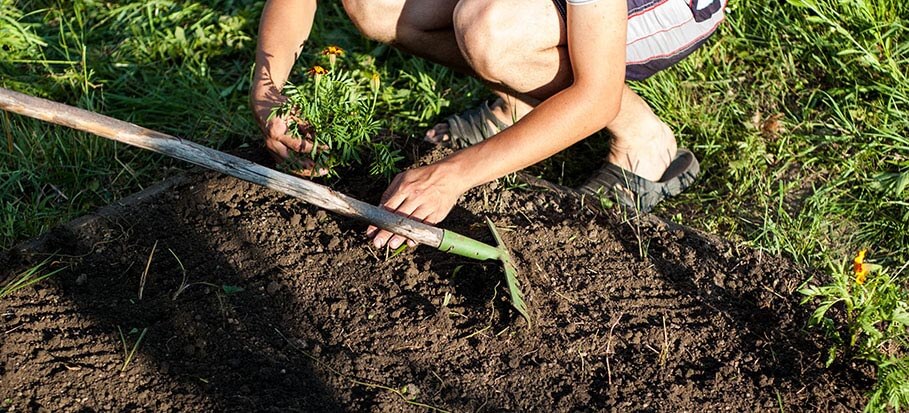Along with adding compost, a second strategy for adding organic matter to my clay soil is cover cropping. I plant cover crops any time the beds in my garden would otherwise be unplanted or fallow. Fallow periods provide little additional organic biomass while allowing the decomposition of organic matter in the soil to continue. They contribute to the improvements in soil structure that I described earlier. And they can smother weeds and even suppress weed seed germination.
Many cover crops will also suppress pathogenic nematodes, for example root knot nematode. Digging will help to improve the drainage of clay soils, but is unnecessary on loam or sandy soils. While you are digging, incorporate as much bulky organic matter as you are able.
Alternatively, you can make leafmould from fallen tree and shrub leaves. In flower beds and around shallow-rooted annuals, apply mulch in 1- to 2-inch-deep layers. If you're mulching trees or woody perennials, use a 2- to 4-inch layer of mulch. Peat is particularly beneficial as an amendment for acid-loving plants in most soils. Apply peat materials to your flower bed at a rate of 3 to 4 bushels per 100 square feet.
I always see things on how to work with sandy, silty, or clay soils, practically nothing on peat soils. I moved to an area this last Fall, that had a lot of glacier activity and is a meadow or grass land now. We would like to grow a garden, but we have black peat soil for about 14 feet down. I used a home soil test and found no nitrogen in the soil. There is some phosphorus and a small amount of potassium. What should we do to our soil to be able to grow a vegetable garden and fruit trees?
Organic matter such as manure helps sandy soil to retain moisture and nutrientsOrganic matter is a kind of cure-all in the garden. Any organic matter will work to build soil structure and its ability to hold onto water. Compost and manure are preferred because they are rich in nutrients, which they drip-feed to your plants. Over time, they'll also help to increase the pH of acidic sandy soils. Adding organic matter to your soil not only helps with the pH balance and plant nutrients, but it also improves soil drainage. Lack of drainage and too much drainage can be equally devastating to your plants.
In clay soils it provides gaps and pockets, allowing water to drain. In sandy soils, it increases the moisture retention capability of the soil. However, major losses in soil organic matter content can take place when the soil is inverted or mixed annually by tillage. Extensive tillage stimulates microbial activity , and the consumption of mass quantities of organic matter ensues.
After your clay soil becomes more friable and you have provided a deep root zone for your garden plants, you should consider reducing tillage. Because the soil remains undisturbed, fertilizers and other soil amendments do not become homogenized in the tillage layer. Plant feeder roots, therefore, tend to proliferate in the top 2 inches of fertile topsoil. Good soil structure and quality help plant roots grow deeper and help the soil retain more moisture, reducing a garden's water needs. Plants growing in quality soil have adequate nutrients so they're healthier and better able to resist pests and diseases.
Fewer pests and diseases mean less need for chemical fertilizers or pesticides. Chemicals aren't necessary to ensure good flower bed soil, because most soils can be improved naturally with the addition of organic materials. All organic materials will eventually decompose in soil and therefore must be renewed from time to time, especially in annual flower and vegetable beds that are continually cultivated. Clay soils benefit from organic matter too, because it improves their structure by binding clay particles into crumbs. By adding coarse sand to heavy soils you can make a permanent improvement in their texture.
Spread the sand to a depth of 5–8 cm, then mix well into the topsoil to a depth of 15–20 cm. Mulching – Clay soils can tend to speed water runoff because water isn't absorbed as quickly into clay soils as it is other soils. Clay soils also tends to stick to the bottoms of your shoes, which can make a mess when you go indoors.
By adding a layer of mulch to clay soil, you not only help keep the house clean, but can reduce the number of weeds that sprout. As mulch decomposes,it will enhance nutrition and water retention, which ultimately allows for better plant growth. Mulch will slow down water run-off allowing clay soil more time to absorb, and store, water. A layer of mulch is also cooler than exposed soil which helps to reduce temperatures overall in the garden. Adding organic matter is the best way to make your soil more loam-like and improve its structure.
Another option is to build a raised garden bed and fill it with a well-balanced soil mix. Or take the simple approach by growing plants that do well in your soil type, such as choosing drought-tolerant plants for sandy soils. You can grow a garden successfully in any soil, as long as the plant's roots are accustomed to the conditions. If you are interested in going no-till, you don't need a soil mixer, an auger or roto-tiller. The quality compost attracts the worms and sow bugs and they really do till for me, and the soil underneath keeps improving. I started with hard-packed, very depleted clay soil that was better for making pots than vegetables.
I have lots of healthy things in the garden now, ladybird beetles, praying mantis, frogs, and they keep the pests in check for me. If you doubt this, try it on just half of a bed, and see the difference after a year. It's a LOT less work, too, so you might want to give it a try. Most home gardens in the metropolitan area of Perth are located on deep, sandy soils. These sands have low fertility, poor moisture and nutrient retention, and are at times non-wetting and water-repellent. Some of these soils may also be too acid or alkaline for the healthy growth of plants.
Sawdust or wood chips, leaf mould, peat moss, coffee grounds and fresh manure will all do the job, but expect to wait many weeks or months to see results. Agricultural sulphur can be quicker acting but it may still take several weeks to do its thing and isn't as effective as organic material over time. The best way to improve soil texture is by adding organic material, such as compost or peat moss. Decaying organic matter helps sandy soil by retaining water that would otherwise drain away. And it corrects clay soil by making it looser, so air, water, and roots all can penetrate. Plus, in all soils it encourages beneficial microbial activity and provides nutritional benefits.
During the initial, pre-garden phase of my soil improvement plan, I managed to break up 10 inches of hard-packed clay with endless swings of my trusty mattock. I spread compost over the surface of the beds an inch at a time and rototilled it in. I was careful not to work the clay when it was too wet, because clay worked wet can result in some tenacious clods, very reluctant in their willingness to ever come apart again. I tried to work the compost deep into the soil, and along with it, I added lime and phosphorus, the clay soil in my garden needing both.
When surface-applied, neither of these materials moves down through the soil, so incorporation to ample depth is very important to permit roots to grow into the subsoil. After 3 to 4 inches of compost, I had the "raised bed" I wanted. Leaves are full of minerals and once they are added to the garden they feed earthworms and other microbes. They can also lighten heavy clay soils and help to retain moisture in lighter sandy soils.
They are a wonderful source of carbon and will increase nutrients in the soil very readily. Sometimes, the effort or expense of modifying a soil to fit our needs is just too much. This is often the case in places with heavy clay soils that do not drain.
In other cases, the soil may be very thin, with rock just underneath. These challenges make raised beds are worthy of consideration. For a closer look at raised bed gardening in Oregon, try this guide from OSU.
Soil particle aggregation and aggregate stability, water holding capacity, drainage, nutrient retention, and plant root growth are all increased when organic matter is incorporated. To get the organic matter down to root level, use a garden fork to mix the material into the top 4 to 6 inches of soil. In vegetable gardens, which usually contain annual or biennial plants, you can amend your soil each season.
Perennial gardens should be amended prior to planting so you won't disturb the plant roots. Many perennials must be dug up every few years for division, providing a good opportunity to work in additional organic matter. The disadvantage of heavy clay soil is that it becomes waterlogged, with poor drainage and aeration.
How Do You Improve Bad Soil Gardeners with a heavy clay soil need to mix in some gypsum - a natural mineral. This helps to break up the clay and will improve its structure so that it forms crumbs that are easy to work. Add organic matter, such as compost or aged animal manures, because they're important for all soils. This heavy, often dark, smooth soil is made up of very fine particles between which there are small air spaces. It is difficult to cultivate, being sticky when wet, yet hard and even cracking, when dry. In situations where drainage is poor, plants can rot because of waterlogging and a lack of air around the roots.
Clay is also a cold soil taking time to warm up in spring, which can slow a plant's root growth. On the upside, clay is not only richer in nutrients than sand, but also retains nutrients and holds water well. Leguminous cover crops can fix significant amounts of nitrogen for use by subsequent crops. Through symbiotic associations with legumes, Rhizobia bacteria convert atmospheric nitrogen into an organic form that legumes use for growth.
How much fixation depends on the length of the growing season, the local climate, and soil conditions. I often plant mixtures of grasses and legumes in the fall to reap the benefits of both. This past fall I planted hairy vetch and cereal rye, a proven mixture here.
Crimson clover and rye or oats also do well in my area. Compost is an ideal way to dispose of plant material such as lawn clippings, leaves and kitchen waste, and it improves your soil. Dig or till a 2- to 4-inch layer of compost into the soil to a depth of 8 to 12 inches when preparing a new flower bed for planting. Work the compost into the entire bed -- amending only the planting holes with compost may limit root growth.
You can apply compost to your flower beds in the spring and fall. It can be made at home, using plant-based wastes and kitchen scraps, or you can find ready-made compost at garden stores and nurseries. The two soil extremes are heavy clay and light, sandy soils – both can be improved by adding lots of bulky organic matter to improve the structure and widen the range of plants that will thrive. To improve soil structure and drainage, increase the soil organic matter level with compost, organic mulches, living plants, and cover crops . More information can be found on this pageOrganic Matter and Soil Amendments. Adding sand can be tricky and typically is not recommended to be added to clay soil.
In mid-May, I become a terminator, literally putting these annual plants down to prepare the beds for summer vegetables. By then, the winter cover crops have provided my annual organic matter addition, as well as enough nitrogen fertilizer to grow my summer crops. Living near the ocean allows me to use seaweed in the garden.
I spread leaves and seaweed in the beds in the fall and let it do its job over the winter months. Come Spring I simply add more compost and mix in the beds. Comfrey or manure tea is good during the growing season. Add to a garbage can, top with water and use it as tea on your plants.
I collect leaves from people who don't want to deal with them. I compost all food scraps…We used to bury old freezer-burned salmon or halibut but the dogs would find their way under the fence and dig it out. The way to improve this type of soil is to add bulky organic matter in spring.
Use plenty of farmyard manure, garden compost or organic soil conditioner when planting to give moisture-holding material at the root level. Mulch all over in late spring to reduce evaporation and use ground cover plants to shield the soil. Non-commercial growers can improve soil so it holds more water and nutrients, wets well and has a pH suitable for plant growth. Water repellence and low pH are important issues not only for the sandy soils of Perth metropolitan gardens, but also in the grain growing areas of Western Australia.
Use cover crops when soils would otherwise be bare to add organic matter, capture residual plant nutrients, and reduce erosion. Cover crops also help maintain soil organic matter in resource-scarce regions that lack possible substitutes for using crop residues for fuel or building materials. Our orchard is in a sandy area and our garden is in a clay area. We didn't plan it that way, it's just how it worked out. We've been working compost into the soil, adding mulch and using cover crops and it is amazing how both the sandy and the clay soil have improved. Rotating crops can be a good way to help your soil healthy.
Each plant requires a different mix of nutrients to grow, so growing the same plants in the same space over and over can work to leach and area of those specific nutrients. While for example, one plant may deplete the levels of nitrogen in the soil, another may improve the nitrogen levels. Anyone who has dealt with compacted garden soil knows just how frustrating it can be. Not only can it be tricky to get a shovel or trowel into the dirt, but it can also be tricky for plants to grow in it. Compacted soil can be a common issue for soils that contain a high amount of clay and also receive a high amount of foot traffic. This type of soil can get waterlogged, or alternatively, have trouble drinking up water at all.

























